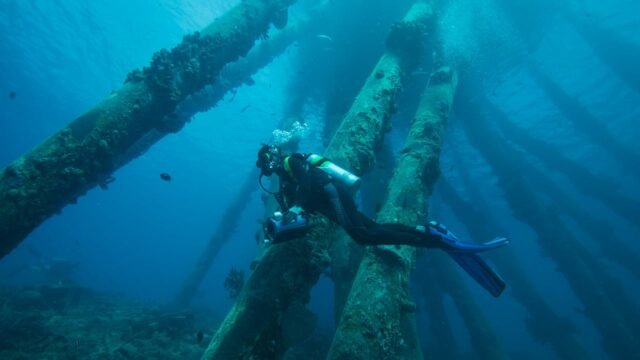Embarking on an underwater adventure requires more than just a sense of curiosity; it demands the right scuba gear to ensure a safe experience. Among the essential components of scuba gear, the regulator system takes center stage, serving as the lifeline that allows divers to breathe comfortably beneath the waves. This article will dive into the intricacies of scuba regulators, exploring their components, the balanced vs. unbalanced debate and the considerations for cold water versus warm water environments.
Components of a Regulator System
The regulator system, available at any good scuba dive store like Divers Supply, is a sophisticated piece of equipment part of the scuba full gear that transforms high-pressure air from the scuba tank into breathable air at ambient pressure. Understanding its key components is crucial for any aspiring or seasoned diver.
First Stage: At the heart of the regulator system lies the first stage, responsible for reducing the high-pressure air from the tank to an intermediate pressure. This component typically features one or more high-pressure ports for gauges and a number of low-pressure ports for hoses connecting to the second stage and other accessories.
Second Stage: Connected to the first stage by a hose, the second stage is the part of the scuba full gear that the diver places in their mouth. It further reduces the air pressure to ambient levels, ensuring that the diver can breathe comfortably. Modern second stages often come with adjustable features, allowing divers to fine-tune their breathing resistance.
Alternate Air Source: Safety is paramount in scuba diving and the alternate air source, or octopus, is a backup second stage that can be shared with a buddy in case of an emergency. It’s a crucial component that adds an extra layer of preparedness to any dive.
Balanced vs. Unbalanced Regulators
The debate between balanced and unbalanced regulators revolves around how these scuba systems deliver air to the diver and each has its merits.
Unbalanced Regulators: Unbalanced regulators are simpler in design and tend to be more affordable within scuba packages. However, they may exhibit an increase in breathing resistance as the diver descends deeper due to the variations in ambient pressure. While suitable for recreational diving in warm water, they might not be the best choice for more challenging conditions.
Balanced Regulators: Balanced regulators, on the other hand, maintain consistent breathing performance regardless of depth. This makes them a preferred choice for deep diving and exploration. While slightly pricier, the investment in a balanced regulator can pay off in enhanced comfort and performance, especially for divers who venture into different underwater environments.
Cold Water vs. Warm Water Regulator Considerations
The choice between a regulator designed for cold water or warm water diving depends on the diver’s intended environment and the specific challenges posed by temperature.
Cold Water Regulators: Cold water introduces additional challenges to scuba packages, such as the risk of freezing. Cold water regulators within scuba packages are equipped with features like environmentally sealed first stages and insulated components to prevent freezing in chilly conditions. Divers exploring polar regions or colder climates in scuba full gear should prioritize cold water regulators to ensure optimal functionality.
Warm Water Regulators: In warm water environments, the risk of freezing is minimal, allowing divers to opt for regulators that prioritize lightweight and compact designs. Warm water regulators within scuba full gear are often more streamlined and may lack the extensive insulation found in their cold water counterparts, making them suitable for tropical and temperate climates.
Conclusion
Choosing the right scuba gear, particularly a reliable regulator system within scuba packages, is paramount for a successful and safe diving experience. By understanding the components of a regulator system, weighing the balanced vs. unbalanced debate and considering the specific needs of cold water versus warm water environments, divers can make informed decisions that enhance their underwater adventures. Whether exploring vibrant coral reefs in the tropics or braving the frigid depths of polar waters, a well-chosen regulator is the key to unlocking the wonders hidden beneath the surface.








